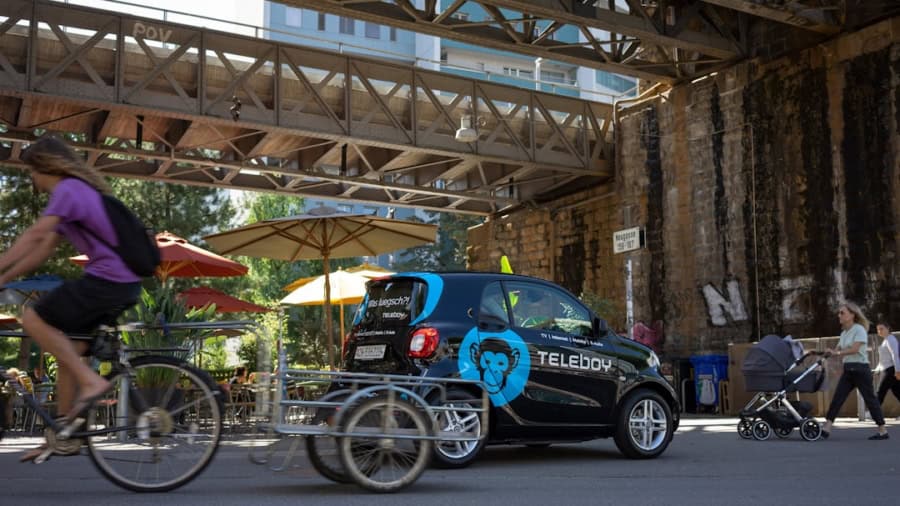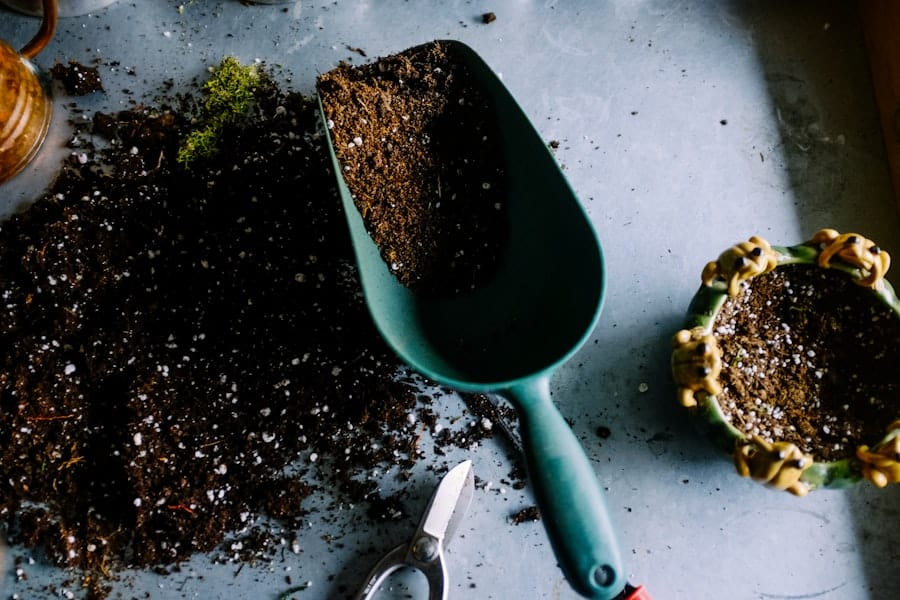In recent years, the concept of home gardening has undergone a significant transformation, largely fueled by the advent of Internet of Things (IoT) technology. As urbanization continues to rise, many individuals are seeking ways to reconnect with nature and cultivate their own food, leading to a burgeoning interest in home gardening. IoT-driven automation systems have emerged as a solution that not only simplifies the gardening process but also enhances the overall experience.
These systems utilize interconnected devices that communicate with one another, allowing for real-time monitoring and management of garden conditions. This technological shift has made it possible for even novice gardeners to maintain healthy plants with minimal effort. The rise of these systems can be attributed to several factors, including the increasing availability of affordable smart devices and the growing awareness of the benefits of home gardening.
With the integration of IoT technology, gardeners can now access a wealth of information about their plants’ needs through mobile applications and web interfaces.
This level of automation not only saves time but also reduces the likelihood of human error, making gardening more accessible to a wider audience.
As a result, the market for IoT-driven home gardening solutions is expanding rapidly, with numerous startups and established companies vying for a share.
Key Takeaways
- IoT-driven home gardening automation systems are on the rise, allowing for more efficient and convenient gardening practices.
- Advancements in sensor technology have enabled smart gardening systems to monitor and control various environmental factors such as temperature, humidity, and soil moisture.
- The integration of artificial intelligence and machine learning in smart gardening systems has improved the ability to analyze data and make autonomous decisions for optimal plant growth.
- IoT-driven home gardening automation plays a significant role in sustainable agriculture by conserving resources and reducing environmental impact.
- Home gardening experience is enhanced through IoT-driven automation, providing users with real-time monitoring and remote control capabilities for their gardens.
Advancements in Sensor Technology for Smart Gardening
The backbone of IoT-driven home gardening automation systems lies in advanced sensor technology. These sensors are designed to collect data on various environmental parameters that are crucial for plant health. For example, soil moisture sensors can determine when plants require watering, while temperature sensors can help maintain optimal growing conditions.
Recent advancements in sensor technology have led to the development of more accurate and reliable devices that can operate in diverse conditions. Many modern sensors are equipped with wireless connectivity, allowing them to transmit data in real-time to users’ smartphones or central control systems. Moreover, the miniaturization of sensor technology has made it possible to integrate multiple sensing capabilities into a single device.
For instance, some smart gardening systems now feature multi-sensor units that can measure humidity, light intensity, and soil pH levels simultaneously. This comprehensive data collection enables gardeners to make informed decisions about their plants’ care. Additionally, the use of low-power wireless communication protocols, such as LoRaWAN and Zigbee, has extended the range and battery life of these sensors, making them suitable for both indoor and outdoor gardening applications.
As sensor technology continues to evolve, it is expected that even more sophisticated devices will emerge, further enhancing the capabilities of smart gardening systems.
Integration of Artificial Intelligence and Machine Learning in Smart Gardening
The integration of artificial intelligence (AI) and machine learning (ML) into IoT-driven home gardening automation systems represents a significant leap forward in how we approach plant care. By leveraging vast amounts of data collected from various sensors, AI algorithms can analyze patterns and make predictions about plant health and growth. For example, machine learning models can identify correlations between environmental factors and plant performance, allowing users to optimize their gardening practices based on empirical evidence rather than trial and error.
One practical application of AI in smart gardening is predictive analytics. By analyzing historical data on weather patterns, soil conditions, and plant growth rates, AI systems can forecast when specific plants are likely to thrive or struggle. This information empowers gardeners to make proactive adjustments to their care routines, such as altering watering schedules or adjusting nutrient levels.
Furthermore, AI-driven systems can provide personalized recommendations tailored to individual users’ gardening goals and local conditions. As these technologies become more sophisticated, they will enable a level of precision in gardening that was previously unattainable.
The Role of IoT-Driven Home Gardening Automation in Sustainable Agriculture
IoT-driven home gardening automation systems play a pivotal role in promoting sustainable agricultural practices at the individual level. By enabling efficient resource management, these systems help reduce waste and minimize the environmental impact of gardening activities. For instance, automated irrigation systems equipped with soil moisture sensors ensure that water is only applied when necessary, preventing overwatering and conserving this precious resource.
This not only benefits the environment but also leads to healthier plants that are less susceptible to disease. Additionally, these systems can facilitate organic gardening practices by providing real-time data on pest populations and plant health. By monitoring environmental conditions closely, gardeners can identify potential issues before they escalate into significant problems.
For example, if a sudden increase in humidity is detected, users can be alerted to the risk of fungal infections and take preventive measures accordingly. This proactive approach aligns with sustainable agriculture principles by reducing the need for chemical interventions and promoting biodiversity within home gardens.
Enhancing Home Gardening Experience with IoT-Driven Automation
The integration of IoT-driven automation into home gardening not only streamlines the process but also enriches the overall experience for gardeners. With user-friendly mobile applications and intuitive interfaces, individuals can easily monitor their gardens from anywhere in the world. This level of accessibility fosters a deeper connection between gardeners and their plants, as they can receive real-time updates on growth progress and environmental conditions.
Moreover, many smart gardening systems offer gamification elements that encourage users to engage more actively with their gardens. For instance, some applications provide rewards for achieving specific milestones or completing tasks related to plant care. This interactive approach transforms gardening from a chore into an enjoyable hobby, appealing to a broader audience.
Additionally, social features allow users to share their gardening successes and challenges with a community of like-minded individuals, fostering a sense of camaraderie and support.
Challenges and Opportunities in the Future of IoT-Driven Home Gardening Automation Systems
Despite the numerous advantages offered by IoT-driven home gardening automation systems, several challenges remain that could hinder widespread adoption.
As these systems collect vast amounts of personal data related to users’ gardening habits and preferences, there is an inherent risk associated with potential breaches or misuse of this information.
Companies must prioritize robust security measures to protect user data while maintaining transparency about how it is used. Another challenge lies in the technological literacy required to effectively utilize these systems. While many devices are designed to be user-friendly, there is still a learning curve for individuals who may not be familiar with smart technology.
To address this issue, manufacturers should invest in educational resources and support services that empower users to maximize the benefits of their smart gardening systems. On the flip side, these challenges present opportunities for innovation within the industry. Companies that successfully navigate data security concerns and provide comprehensive user education will likely gain a competitive edge in the market.
The Impact of IoT-Driven Home Gardening Automation on Urban Agriculture
The rise of IoT-driven home gardening automation systems has profound implications for urban agriculture. As cities continue to grow and green spaces become increasingly scarce, these technologies offer a viable solution for individuals looking to cultivate their own food within limited spaces. Vertical gardens and hydroponic systems equipped with smart sensors allow urban dwellers to maximize their available space while producing fresh produce year-round.
Furthermore, IoT-driven automation can contribute to food security in urban areas by enabling residents to grow their own fruits and vegetables. This self-sufficiency reduces reliance on external food sources and minimizes transportation-related carbon emissions associated with traditional agriculture. Additionally, urban gardens equipped with smart technology can serve as educational platforms for communities interested in sustainable practices.
Workshops and demonstrations can showcase how IoT-driven solutions enhance productivity while promoting environmental stewardship.
Future Trends and Innovations in IoT-Driven Home Gardening Automation Systems
Looking ahead, several trends are poised to shape the future of IoT-driven home gardening automation systems. One notable trend is the increasing integration of renewable energy sources into these systems. Solar-powered sensors and irrigation systems are becoming more prevalent as consumers seek sustainable solutions that align with their values.
This shift not only reduces energy costs but also enhances the overall sustainability of home gardening practices. Another emerging trend is the incorporation of augmented reality (AR) into smart gardening applications. AR technology has the potential to revolutionize how users interact with their gardens by overlaying digital information onto real-world environments.
For example, gardeners could use AR glasses or smartphone apps to visualize plant growth projections or receive step-by-step care instructions directly within their garden space. This immersive experience could further enhance user engagement and foster a deeper understanding of plant care principles. As technology continues to advance, we can expect even more innovative solutions that will redefine home gardening experiences through IoT-driven automation systems.
The convergence of AI, sensor technology, renewable energy sources, and immersive interfaces will create an ecosystem where gardening becomes not only easier but also more enjoyable and sustainable for everyone involved.
In a recent article discussing the future of IoT-driven home gardening automation systems, Enicomp also explores the top trends in e-commerce business. The article highlights the importance of staying up-to-date with the latest advancements in technology to enhance the customer experience and drive sales. To read more about this topic, visit Enicomp’s article on top trends in e-commerce business.
FAQs
What is IoT-driven home gardening automation system?
An IoT-driven home gardening automation system is a technology that uses the Internet of Things (IoT) to automate and monitor various aspects of home gardening, such as watering, fertilizing, and monitoring plant health.
How does IoT-driven home gardening automation system work?
IoT-driven home gardening automation systems typically consist of sensors, actuators, and a central control unit. The sensors monitor environmental conditions such as soil moisture, light levels, and temperature, while the actuators are responsible for actions such as watering and fertilizing. The central control unit processes the data from the sensors and triggers the actuators to perform the necessary actions.
What are the benefits of IoT-driven home gardening automation systems?
Some benefits of IoT-driven home gardening automation systems include improved plant health and growth, reduced water and resource usage, and the ability to remotely monitor and control the garden from a smartphone or computer.
What are some popular IoT-driven home gardening automation systems on the market?
Some popular IoT-driven home gardening automation systems on the market include PlantLink, Parrot Flower Power, and Edyn Garden Sensor. These systems offer various features such as real-time monitoring, automated watering, and personalized plant care recommendations.
What is the future of IoT-driven home gardening automation systems?
The future of IoT-driven home gardening automation systems is expected to involve advancements in artificial intelligence and machine learning, leading to more personalized and precise plant care recommendations. Additionally, integration with smart home systems and voice assistants is likely to become more common, making it even easier for users to manage their gardens.



